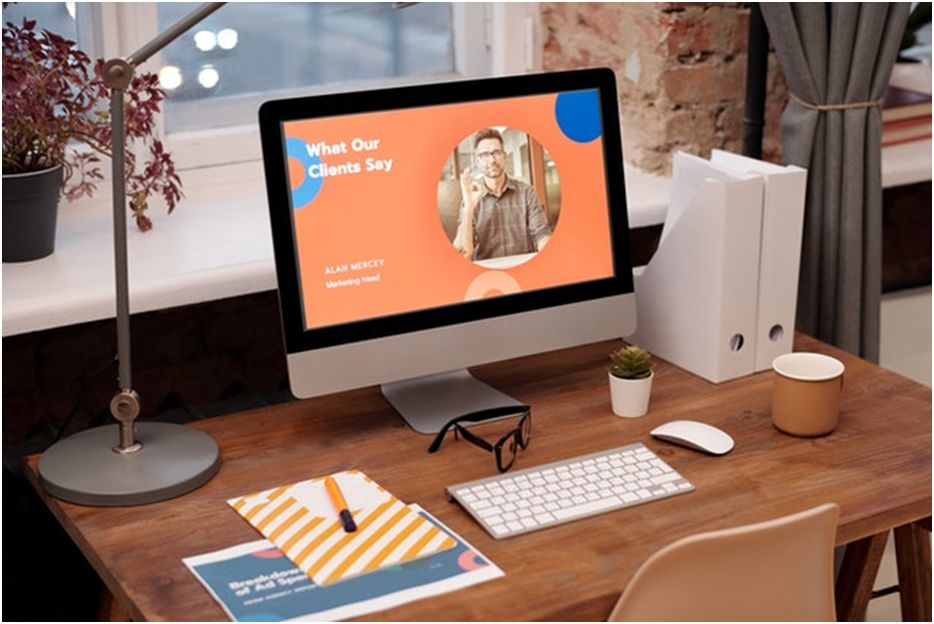
Today, a large number of people around the world have access to the internet. Better network architecture and better access to smartphones and similar devices mean that new avenues and markets have opened up, which can be used to target these new users.
People use the internet to browse various websites according to their needs or desires. So it makes sense that having an attractive website will go a long way towards converting that person into a regular visitor and eventually a customer.
As the first interaction source with a potential customer for many businesses, websites need to look good and perform well. Every business owner wants their website to have an innovative façade designed to keep a potential customer engaged for a long while.
Why the need to redesign
Often, businesses focus on the website’s looks but tend to ignore the other metrics of performance. As the website owner, it’s your job to find and fix the issues that hinder the website from fulfilling its purpose efficiently.
A set of studies conducted by researchers at Ottawa University in Canada found that customers who view a website judge its credibility in milliseconds, based entirely on how it looks. These results show that you might be losing valuable business just because your website design does not appeal to your prospective customer.
User experience counts a lot nowadays. Suppose the user can easily navigate your site and enjoy browsing it. In that case, you can say that your site offers a good user experience. On the other hand, if a visitor rarely navigates to other pages on your site besides the homepage, it is a cause for alarm.
In such cases, different types of websites require a variety of design changes to address these issues. But how can you find out what problems need to be rectified to improve your website’s user engagement and experience?
To help you on this journey, we have listed a few tips to help you make the right changes.
1. Plan it out
Before you begin the redesign process, you need to figure out what needs to be changed. To do that, you need to plan out our prospective customer’s journey and figure out where they might encounter issues.
Pre-planning
Planning a customer journey requires us to find out:
- what pages the user might visit,
- what content they view,
- and where you might convert them.
This helps to figure out the kinks in the journey, which might be stopping our site from converting a promising lead.
An effective customer journey map lists the similarities between converted users and the users who were not. This helps you pinpoint the areas on your website which might be costing you customers. To make this customer journey map, you require a lot of relevant customer feedback.
Gathering the data
The data required can be collected via:
- customer interviews
- through a CRM employed by your company.
This data will help you plan the site visitor’s mindset at each point they interact, helping you figure out the changes required to attract them.
This entire planning process will help you know how to redesign your website effectively, with changes that speak specifically to the potential customer’s mind.
Suppose you are still confused about how to start designing this journey map. In that case, this step-by-step guide also includes customer journey map templates to get you started.

2. Optimize it for the mobile devices
In the past few years, internet use through mobile devices has increased exponentially. Conversely, people using the internet through PCs have decreased in number. That means that most people visiting would be using a mobile device of some kind for any given site.
With such a variety of mobile devices available nowadays, your website must be optimized to be viewed on several machines, featuring different screen sizes and orientations.
Optimizing does not just require that your website works perfectly on a mobile device. Conformity of functions between the web and mobile version is essential too. It allows your customers to transition seamlessly from one browsing medium to the other without passing through a learning curve.
Who should do it?
Similarly, knowing why a customer might prefer visiting your website via a phone instead of a PC is essential too. Consider the following two examples.
- A food delivery service needs to have a website optimized correctly for use on both mediums. Users might prefer a choice of devices when ordering from them.
- Conversely, a homework helper website for an educational institute might not need to be optimized for the mobile. Most users would be using a PC when using it.
In short, while it might not be necessary to optimize a website for mobile devices, it is better to follow a mobile-first approach when developing a new website. This will allow your website to cater to mobile users when needed, setting your site up for the future.

3. White space is your friend
White spaces are a great way to structure your content to make it easier for reading and viewing. Also known as negative space, it works by providing space around your content element, devoid of any visual items to distract or confuse the viewer.
Leveraging the amount of whitespace can help you properly sequence and relate the content on your webpage.
- Larger white spaces denote the separation and distinctness of the different elements on a page.
- Use smaller white spaces to denote natural breakpoints in longer content.
Using whitespaces to break and structure your content can effectively direct viewers’ attention to the content you want them to see. Breaking a long content piece into chunks separated by whitespaces can help viewers read and understand it better. And that is the what rather than getting intimidated by the length and ignoring the content entirely.
The upsides to using white space
Many people argue that using whitespace on their websites means wasting valuable marketing space. But they are unaware of the various benefits it provides.
- With people having an increasingly shorter attention span day by day, whitespace allows you to break the content into chunks small enough to get your message across without overwhelming the viewer and losing their attention.
- It is also a great way to portray your company methodology. A cluttered and haphazard web page gives off an aura of neglect and shows a lack of interest by the company. A clean, well-structured, and current web page, utilizing whitespace to their advantage, helps a client believe the same for the company too.
Using too much whitespace or too little can both be harmful to the website design. The important thing is to find the perfect blend of whitespace that works for your website and content.

4. Choose the right images
While it is recommended that you use original images on your website, that might not be an option every time. In that case, there are ways to make sure that you choose the right stock images for your website, which will enhance your website’s looks.
Often, people opt for stock images due to a lack of time or resources. That might result in:
- Multiple sites utilizing the same image on their webpages
- The pictures used might seems forced or unnatural in your website’s setting.
That reduces our brand’s credibility for our customers and will hurt our business in the long run. That is because images have a way of associating themselves with emotions in the minds of their viewers.
Suppose a user visiting your site has had a lousy emotion attached to an image on your site. In that case, they will be bringing over their prejudice with them, which will negatively affect their entire experience.
A vast majority of stock images featuring people interacting seem quite clearly staged. Most of these images will show people interacting in an entirely unnatural and awkward way, not something you want to be associated with your website.
What to look for in an image?
Therefore, when searching for a stock image for your website, choose one with a neutral or formal approach. Look for photos that exude an air of relaxation and do not look forced.
- People gathered around a business table,
- people working in an office,
- colleagues collaborating,
and many others where are examples of stock images that can significantly affect your website positively.
Making sure it is the right image
For maximum impact by those stock images, reverse image search tools like TinEye are fantastic to have in your arsenal. These tools will help you find
- the number of websites using the same picture and
- even help you find higher resolution versions if you need them.
If many sites are using that same image, it might be better to choose another one.
Having images that stand out and portray your brand’s aesthetic is a great way to get more customers. That is why choosing the right image, stock, or original is very important.

5. Show why clients should trust you
People tend to trust businesses with excellent and honest reviews. Shopping online or in-store, people nowadays tend to look at reviews before finalizing their product choice. They usually go for the product rated higher.
The purpose of companies showing these reviews is simple – to grow the customer’s trust in the product or service they are about to buy. The promise of a product delivering quality, driven by good reviews, can influence someone to buy a product.
The same thought process goes for people visiting our website to browse your services. Showcasing testimonials by happy clients convinces a person to put their trust in us.
But what kind of testimonial should you use?
- While textual testimonials are more common, video testimonials have been seen to be the better form. As a medium, videos tend to engage a user better by providing a personal touch through voice and actual humans.
- A great way to implement video testimonials is to space them out on your web page and provide brief details about the client, goals, and process. This will help a viewer understand the context behind the video testimonials and thus relate to it better.
- Finally, suppose you do not want video or text-based testimonials on your page. In that case, another great way is to have a page showcasing your various case studies. These case studies would contain detailed accounts of the work you’ve done for each client, which is an excellent way to explain your work process.

Conclusion
Finding what needs modification in the design of your website takes time. Changing your website design is not something you do every day, and taking your time to do it properly is the best way to do it. You need to figure out the changes that will improve your site’s attractiveness, performance, user experience, and, most importantly, its ability to boost conversions and increase sales.
To the uninitiated, it may seem like a monumental task. While it may be true, the benefits you will reap from revamping your website will be well worth the effort you put in today.
If you believe your website needs a revamp, following these tips would give you a big leg up during the process.